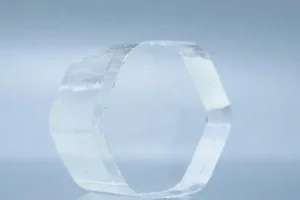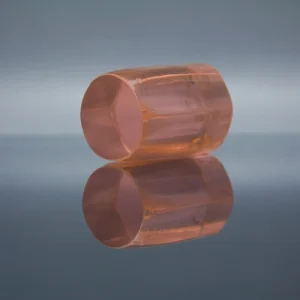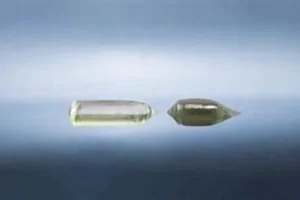ZGP crystal is a nonlinear optical material with many applications in the mid-infrared region of the electromagnetic spectrum. It can generate coherent light sources with tunable wavelengths, high power, and high efficiency. This article will introduce the properties, growth methods, annealing techniques, and applications of ZGP crystals in energy-related fields.
What is ZGP Crystal?
ZGP stands for zinc germanium phosphide (ZnGeP2), a positive uniaxial crystal with a chalcopyrite structure. It has a large nonlinear susceptibility (d36~75 pm/V), about 160 times larger than KDP (potassium dihydrogen phosphate). This means that ZGP crystal can convert an input laser beam into an output beam with a different frequency through optical parametric oscillation (OPO).
ZGP crystal also has a wide transparency range from 0.74 to 12 micrometers, covering the important atmospheric transmission windows. This makes it suitable for various applications in remote sensing, spectroscopy, medical imaging, and laser surgery. Moreover, ZGP crystal has a relatively high laser damage threshold (55.67 MW/cm2 at 1064 nm), which enables it to withstand high-intensity laser pulses without degradation.
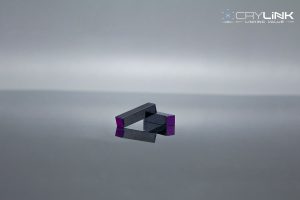
How is ZGP Crystal Grown?
ZGP crystal is grown using a modified Bridgman method, which involves heating a mixture of zinc, germanium, and phosphorus in a sealed quartz ampoule and slowly cooling it down while rotating it along its axis. The rotation helps to reduce thermal stress and improve the crystalline quality of ZGP.
The growth process of ZGP crystal requires precise control of temperature, pressure, and atmosphere. The optimal growth conditions are a temperature gradient of 20-30 ℃/cm, a
pressure of 0.1-0.5 MPa, and an argon gas flow rate of 0.5-1 L/min. The growth rate is typically 1-2 mm/h.
The resulting ZGP crystal has a cylindrical shape with a diameter of about 25 mm and a length of about 100 mm. Depending on the desired phase-matching condition for OPO, the crystal can be cut into wafers along different orientations.
How is ZGP Crystal Annealed?
ZGP crystal is usually annealed after growth to improve its optical quality and reduce its absorption coefficient. Annealing is heating the crystal to a high temperature (below its melting point) and then cooling it down slowly.
The annealing temperature for ZGP crystal ranges from 800 ℃ to 950 ℃, depending on the initial absorption coefficient and the desired final value. The annealing time varies from several hours to several days, depending on the size and shape of the crystal.
The annealing process can reduce the absorption coefficient of ZGP crystal by more than one order of magnitude, which enhances its efficiency and performance as an OPO material. However, annealing can also cause some changes in the refractive index and birefringence of ZGP crystal, which may affect its phase-matching condition for OPO.
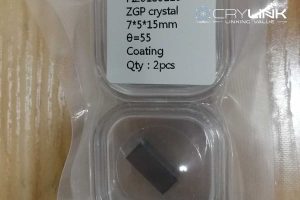
What are Some Applications of ZGP Crystal in Energy?
ZGP crystal has many potential applications in energy-related fields due to its ability to generate tunable mid-infrared light sources with high power and efficiency. Some examples are:
- Laser spectroscopy: Using ZPG as an OPO material, one can obtain coherent light sources ranging from 2 to 10 micrometers, covering many molecular absorption bands. In environmental monitoring, industrial process control, and combustion diagnostics, these light sources can detect trace gases such as methane, carbon dioxide, nitrous oxide, and sulfur dioxide.
- Remote sensing: Using ZPG as an OPO material, one can obtain coherent light sources with wavelengths ranging from 3 to 8 micrometers, corresponding to atmospheric transmission windows. These light sources can measure atmospheric parameters such as temperature, humidity, pressure, and wind speed in meteorology, climatology, and aviation.
- Medical imaging: Using ZPG as an OPO material, one can obtain coherent light sources ranging from 4 to 6 micrometers, which matches well with biological tissues’ absorption characteristics. These light sources can be used for imaging blood vessels and organs with submicrometer spatial resolution. These light sources can diagnose diseases like cancer, diabetes, and atherosclerosis.
- Laser surgery: Using ZPG as an OPO material, one can obtain coherent light sources with wavelengths ranging from 6 to 10 micrometers, which have high absorption by water and other biological molecules. These light sources can be used for cutting, coagulating, and ablating tissues with minimal collateral damage and bleeding.
Conclusions
ZGP crystal is a nonlinear optical material with many advantages for generating mid-infrared light sources with tunable wavelengths, high power, and high efficiency. It has a wide transparency range, a large nonlinear susceptibility, and a relatively high laser damage threshold. It can be grown using a modified Bridgman method and annealed to improve its optical quality and reduce its absorption coefficient. It has many applications in energy-related fields, such as laser spectroscopy, remote sensing, medical imaging, and laser surgery.
FAQs
What is the difference between ZGP crystal and ZnGeP2 crystal?
ZGP crystal and ZnGeP2 crystal are two names for the same material: zinc germanium phosphide. ZGP is an acronym for ZnGeP2.
What is an optical parametric oscillation (OPO)?
Optical parametric oscillation (OPO) converts an input laser beam into two output beams with different frequencies through a nonlinear optical material. The output beams are called signal and idler, and their frequencies satisfy the energy conservation equation: input frequency = signal frequency + idler frequency.
What is a phase-matching condition for OPO?
The phase-matching condition for OPO requires that the input, signal, and idler beam have the same phase velocity in the nonlinear optical material. This ensures they remain in phase along their propagation direction and maximize their energy conversion efficiency.
What factors affect the performance of ZGP crystal as an OPO material?
Some factors that affect the performance of ZGP crystal as an OPO material are absorption coefficient, refractive index, birefringence, nonlinear susceptibility, laser damage threshold, temperature stability, and surface quality.
How can one optimize the performance of ZGP crystal as an OPO material?
One can optimize the performance of ZGP crystal as an OPO material by choosing an appropriate orientation for the phase-matching condition; annealing the crystal to reduce its absorption coefficient; coating the crystal surfaces to reduce reflection losses; controlling the temperature to maintain the phase-matching condition; using high-quality input beams to avoid laser damage.


